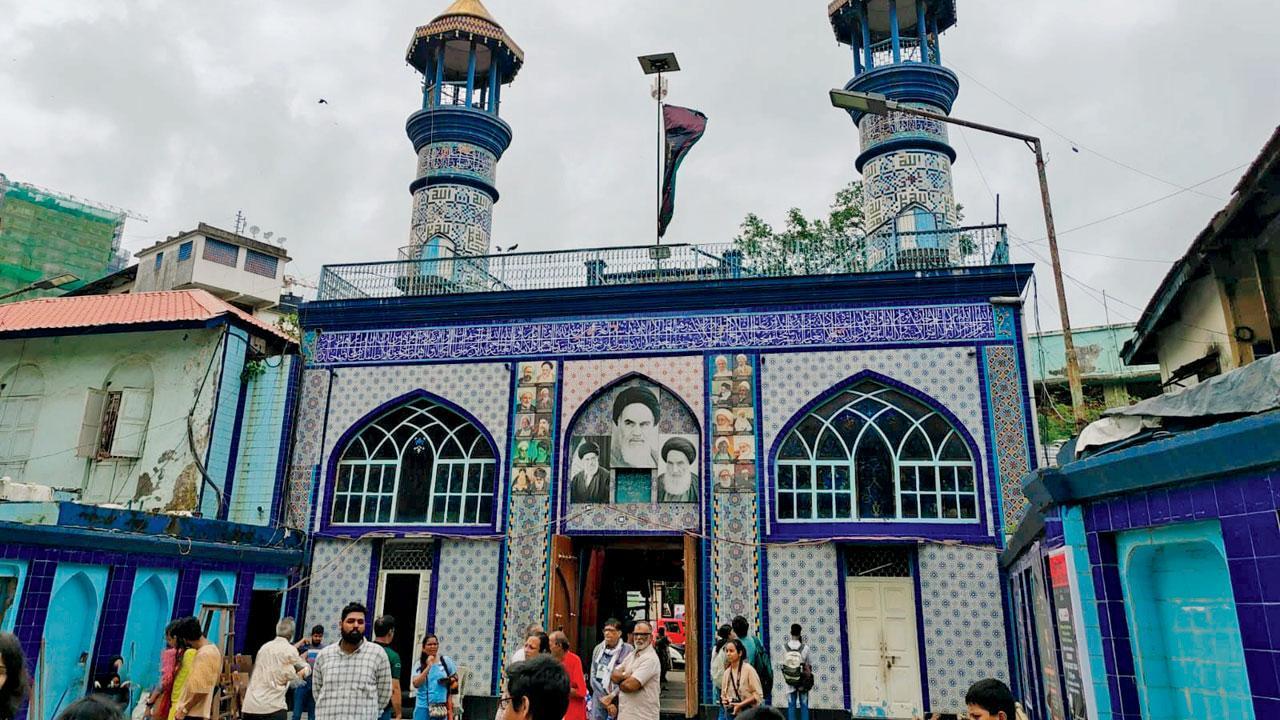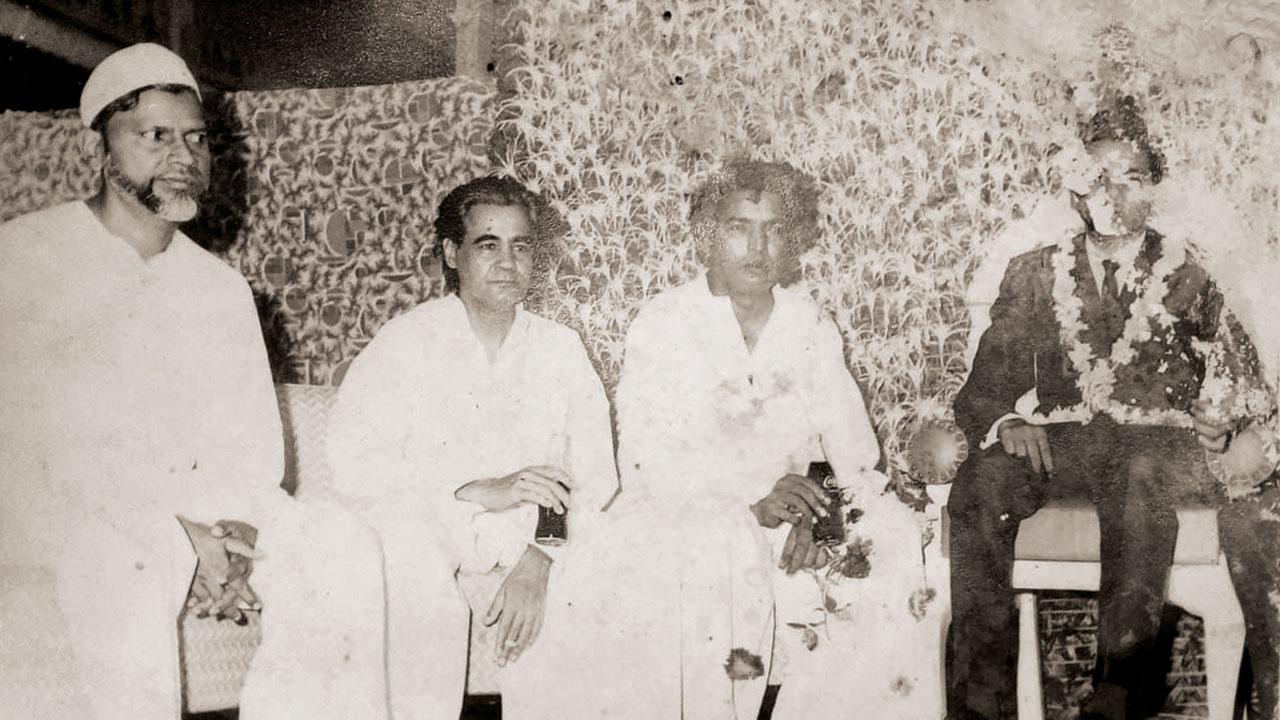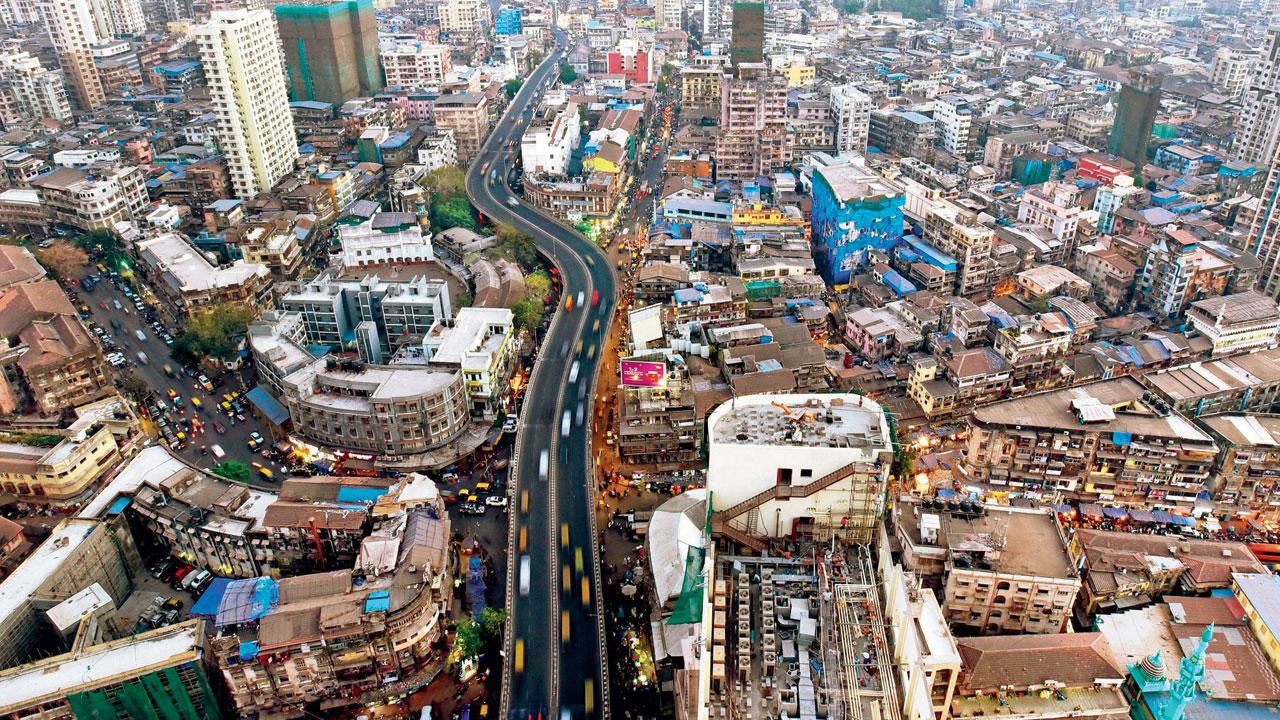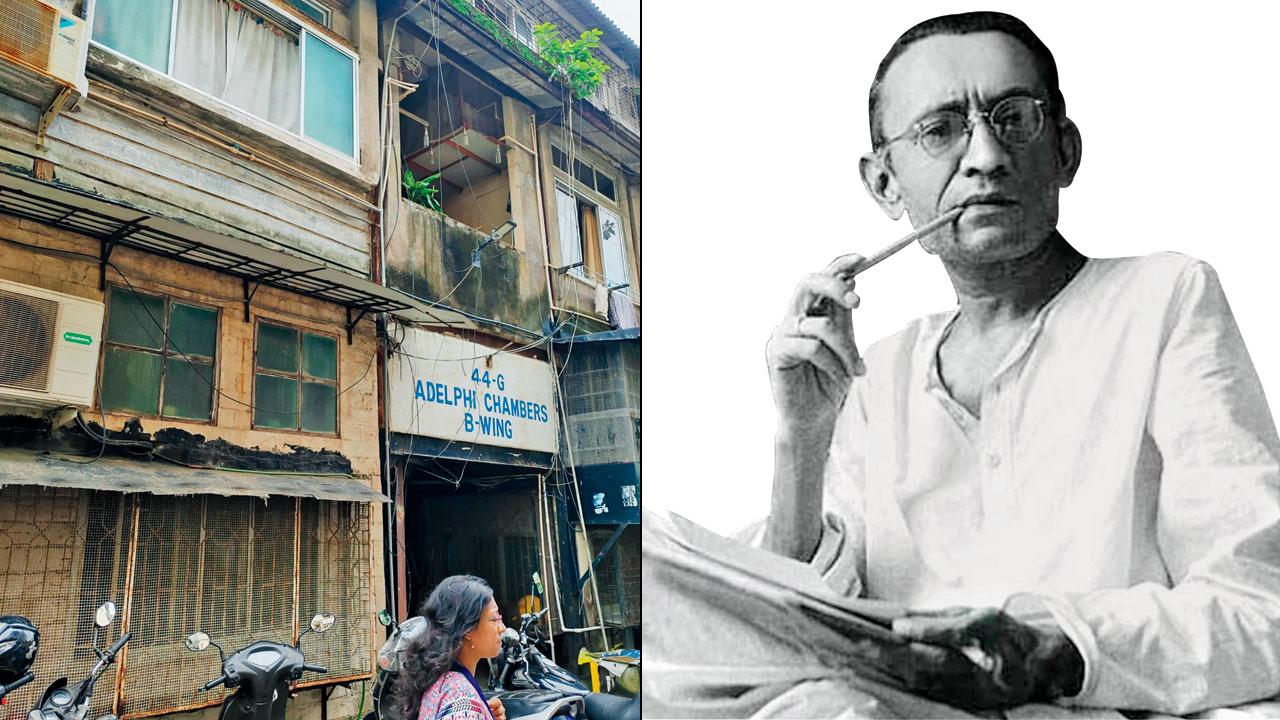A new research project initiated by Urdu Markaz will crowdsource and compile oral histories of this culturally rich neighbourhood to assist future studies

The Mughal Masjid reflects Bhendi Bazaar’s Iranian influences
Advocate Zubair Azmi proposes an alteration to the popular aphorism that suggests the languages spoken change every few kilometres as you traverse the country. “That’s a stretch. In Bhendi Bazaar, the dialects change between every naka [junction]. Fluent Urdu will fade into Bambaiya Hindi, and back to a poetic Uttar Pradeshi dialect in the blink of an eye,” the director of Urdu Markaz laughs. A neighbourhood so linguistically diverse, yet filled with stories that remain untold, he points out.
Bhendi Bazaar Research Academy, Azmi’s new project, will aim to create a handbook for future studies with a compilation of stories that unveil why Saadat Hasan Manto liked his evening strolls in Madanpura, why poet Majrooh Sultanpuri once travelled disguised in a burqa to Nagpada, and how Mohammed Rafi chose a compact ‘kholi’ in Vazir Building at Bhendi Bazaar junction before achieving widespread fame.

Old Bhendi Bazaar. PIC COURtESY/WIKIMEDIA COMMONS
“I don’t think you can demarcate Bhendi Bazaar on the map. It encapsulates the spirit of the many Urdu-speaking areas spread across South Mumbai. It begins from Crawford Market’s Jama Masjid built by the Konkani Roghay family, and ends somewhere near Mominpura, comprising Pydhonie, Dongri, Bohri Mohalla, Nagpada, and Madanpura along the way,” Azmi suggests. The seeds of the language that is now synonymous with neighbourhood, were sowed with the establishment of Anjuman E Islam in 1879. “Bhendi Bazaar would’ve been starkly different without founder Dr Badruddin Tyabji’s foresight to educate its people,”
Azmi admits.
It’s probably this love for Urdu that made progressive writers like Manto, Kaifi Azmi, Majrooh Sultanpuri and Sahir Ludhianvi regulars in its bylanes. “Manto would frequent Madanpura for his evening walks, and head to Sarvi Hotel for a cup of tea later. That was his routine,” Azmi reveals. As his fans would know, it was these chai breaks that inspired the literary legend’s short stories and its peculiar characters. “Siraj, the pimp, from Manto’s stories, was a Sarvi regular too. He would operate at the bus stand opposite the hotel,” he adds.

Kaifi Azmi (third from left) with Ali Sardar Jafri (second from left) at a gathering in Madanpura
The story of Sarvi, and similar anecdotes, are oral histories passed on to Azmi by his family, peers and the eminent personalities themselves. The director recalls meeting Kaifi Azmi and Sultanpuri with his colleagues. “They had an enthusiastic, amiable vibe to them. When learners like me would visit them, they would be glad that the new generation still values their craft,” the director recalls. Turns out, Sultanpuri’s enthusiasm wasn’t confined to private attendances.
“Mastan Talao in Nagpada was a hub for late night mushaira gatherings, especially in the early 1960s. Huzoor Khan, a police officer, was entrusted with curbing literary gatherings by progressive, left-leaning poets and authors at the time. To work around the strict regulations, Sultanpuri reached the venue in a burqa,” Azmi shares, letting out a hearty chuckle.

A bird’s eye view from recent times of the areas constituting Bhendi Bazaar. FILE PIC
While the focus is naturally on the arts, given Azmi’s education in literature, the heavy lifting in fields like architecture, food, and business is left to a team of professors, historians, and intellectuals; all of them Azmi’s acquaintances. Dr Rehaan Ansari, an expert in urban planning, for instance, will paint a picture of the neighbourhood’s varied styles of architecture. From Iranian influences on the Mughal Masjid in Imamwada to the traditional three-storeyed houses with an otla (a raised plinth with steps) inspired by Gujarati migrants, the paper will unearth influences on the area’s buildings.

Adelphi Chambers, Manto’s residence in Byculla (right) Saadat Hasan Manto
As the director signs off, he gladly informs us that locals from Bhendi Bazaar, as well as those who trace their roots to the locality, have already started contributing to the project. “Earlier today, I received a call from a professor in Mira Road who will be sending us details of the forgotten Ansari weaver’s community in Madanpura. Another caller knew of an Urdu poet from the neighbourhood who wrote in the rare Purbi dialect centuries ago. These are stories that need to be told as soon as possible. If we don’t, these stories, as glorious as they are, might be lost forever,” he sighs.
Message 9322695208 (for queries and suggestions)
 Subscribe today by clicking the link and stay updated with the latest news!" Click here!
Subscribe today by clicking the link and stay updated with the latest news!" Click here!










